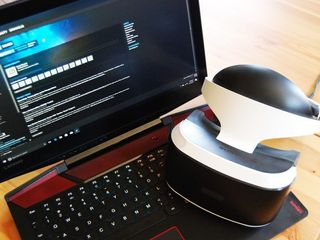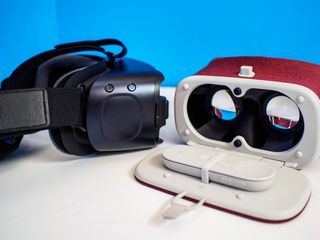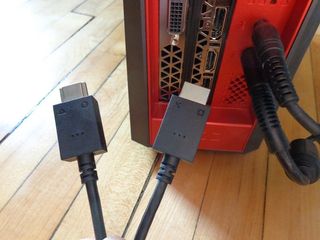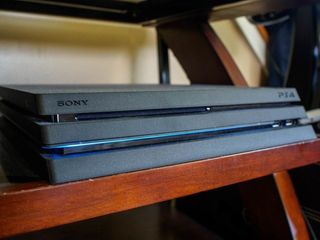A beginner's guide to virtual reality
Big name players from a variety of industries are all racing towards a VR goal, all of them using slightly different approaches. From price to specs to space available in your home or office to equipment you already own, there are a number of factors that help you decide which device is best for you.
This isn't an exhaustive list of virtual reality devices or a spec showdown between VR powerhouses. This is a guide to the big questions you'll have to ask yourself before you get your first VR device.
- Should you go mobile or PC-powered?
- How much space do you have available?
- What equipment do you already own and how much are you will to spend?
Should you go mobile or PC-powered?

The first big decision anyone has to make when it comes to VR is what type of headset they're going to get. PC-powered VR headsets are powerful, generally well-built, and are often high-end, giving you the ultimate VR experience. Their power and capabilities utilize the PC powering them and, if you have the funds and the proper setup, can give you a holodeck-like experience.
A downside of PC-powered devices is that they're often tethered to a PC and that hardware has to be fairly powerful to run high-end VR, or even run the device at all. But that restriction has become slightly less of an issue recently. While PC-powered VR headsets have to be connected to a PC, that connection doesn't have to be wired. TP-Cast has a wireless adapter for the HTC Vive and HTC showed off its own wireless adapter at CES 2018. Additionally, you can run high-end VR off of some laptops and even a PC that fits in a backpack. These computers aren't cheap, but they mean that you have options that provide more mobility than VR used to have.
If you're starting completely from scratch, you'll have to buy both a VR device, which can range from $100 to around $600, plus an entire gaming rig, which can range from relatively affordable to absurdly expensive depending on what you're looking for.

Mobile VR offers the distinct advantage of being portable. You can pop on a Gear VR or Daydream headset and use it anywhere you want. You can easily bring it to a friend or family member's house or into your office. They work by just attaching your phone and, depending on the VR device, have a relatively wide range of compatibility with phones. You have to have a fairly new and high-end smartphone to use Google's Daydream, but you have multiple options that fit the bill. Samsung's Gear VR requires a Samsung device but you don't have to have the latest flagship to make it work.
The downside of these phone powered devices is that they don't stack up to PC powered VR in terms of power. And while mobile powered headsets are built well, they aren't as beefy as the HTC Vive and Oculus Rift. Additionally, if you don't have a phone that can run VR you'll have to buy one. This is less of a hurdle for many people because phone carriers make it easier to get high end devices and if you go the buying outright route most people are used to buying new phones every couple of years.
Be an expert in 5 minutes
Get the latest news from Android Central, your trusted companion in the world of Android
If you're in the market for a new phone and are interested in checking out VR, it's worth grabbing a handset that can handle virtual reality. The phone makes up the bulk of the expense when it comes to phone-powered VR.
How much space do you have available?

Before you get any device, you need to look at the space you'll be using it in. A device can go to waste if it's not in an environment to thrive.
There are two approaches to immersive VR: devices that require sensors mounted in the room and devices that have all required sensors built in. The two main options for setups requiring mounted sensors are the HTC Vive and Oculus Rift. The Oculus Rift comes with two sensors but a full room setup requires an additional censor to be purchased.
If you are mainly using VR at your desk, you don't need the full room setup.
Devices that have all of their sensors built in are generally powered by Windows Mixed Reality. These headsets scan the room you're in and can incorporate your surroundings in VR and AR.
If you are mainly using VR at your desk, you don't need the full room setup. The Oculus Rift is well suited for desk-based or seated virtual reality and also comes with a lower price tag. The HTC Vive can be used at a desk as well, but you'll have to decide if it's worth the price jump to get a device that you wouldn't be using to its full potential. Windows Mixed Reality headsets can also be used while seated or while utilizing an entire room.
What equipment do you already own and how much are you will to spend?

VR isn't the cheapest field to jump into. Computers or phones that can power VR aren't usually cheap, the VR headsets themselves have a price tag, and the software you run on them can add to the price. It's worth it of course if you can afford it. And how much you can afford is one of the biggest dictators of what device you should look to purchase.
If you're a PC gamer and just want to add VR to your gaming setup, prices likely won't surprise you. Similarly, if you have a PlayStation 4 or PlayStation 4 Pro and want to get into VR, you can look at PlayStation VR. But if you're just a casual user who wants to jump in, you can easily, and affordably, enjoy VR with a high-end smartphone.
The entry-level price for VR is the most affordable it's ever been. Google's Daydream can be purchased for only $69. Samsung's Gear VR is slightly higher but is still only around $100 with a controller. But these devices' low prices don't mean that much if you need to spend $600 or more on a phone to run VR.

PlayStation VR is closer to PC-powered VR pricing at around $360, but if you already have a PlayStation 4, that isn't as much of an investment.
Equipment you already own affects your budget the most on the PC-powered side of things. The Oculus Rift is available with Touch controllers for $399, and even if you want to add more sensors, they're only $79 each. The HTC Vive recently had its price dropped to an alluring $599 and with that you get an extensive setup. Windows Mixed Reality devices vary more in price, ranging from $399 to $499. None of these is a small investment, but perhaps something many could afford. But if you have to tack on a full gaming PC, you'll be looking at a total in the thousands rather than hundreds depending on the specs you want.
Summing up your decision

VR is an expanding industry that many are going to want to be a part of. But deciding what type of device you get isn't cut and dry. After weighing your financing, space available, equipment you already own, and looking at how you'll be using your device, you can cut down your choices to a few options.
Once you've decided the type of device you want, check out some of our head-to-head comparisons to help you pick a specific headset:

